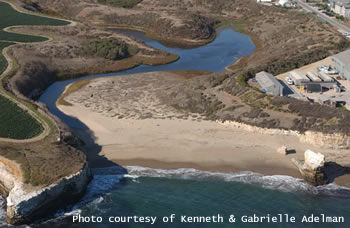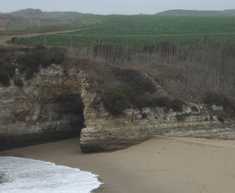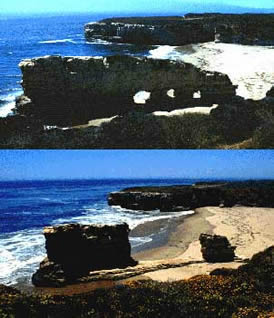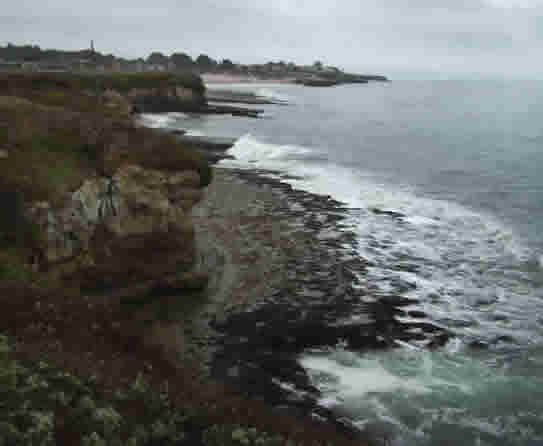|
YLR
Home | Overview
| Animals
| Plants | Research
| Geology
| Peregrine Falcons
| Sounds
of YLR Seasons
| Tours
| Volunteer |
Directions
to YLR | Contact
Us
|
| Geology of Younger Lagoon Reserve |
 |
|
Younger Lagoon is part of a system of marine terraces along the California coastline that were formed approximately 100,000 years ago as a result of the uplifting of land caused by plate tectonics, as well as climatic changes facilitating a lowering of sea level. |
|
Over
one night in February, 1992, a storm collapsed the rock arches on
the beach at Younger Lagoon and washed away the remains without
a trace. |
|
Over
time the waves breaking on the beach have pushed sand up into the
channel, forming a barrier between the fresh water of the lagoon
and the salt water of the ocean for much of the year. This barrier
is known as a berm, which consists of an underlying layer of bedrock
and a sand layer on top. The rock shelf usually inhibits the exchange
of salt and fresh water, however there may be some seepage of seawater
through the sandy layer.
|
|
Geology Links: Earth
Sciences Department at UCSC |
|
|
|
Marine
terraces are ancient shorelines consisting of a relatively flat
wave-cut platform (rocks in the surf zone that have been eroded
by waves). This photo was taken at the cliffs near Long Marine
Lab.
|
 Sea arches and caves are a characteristic feature of Santa Cruz County coastline geology. |

